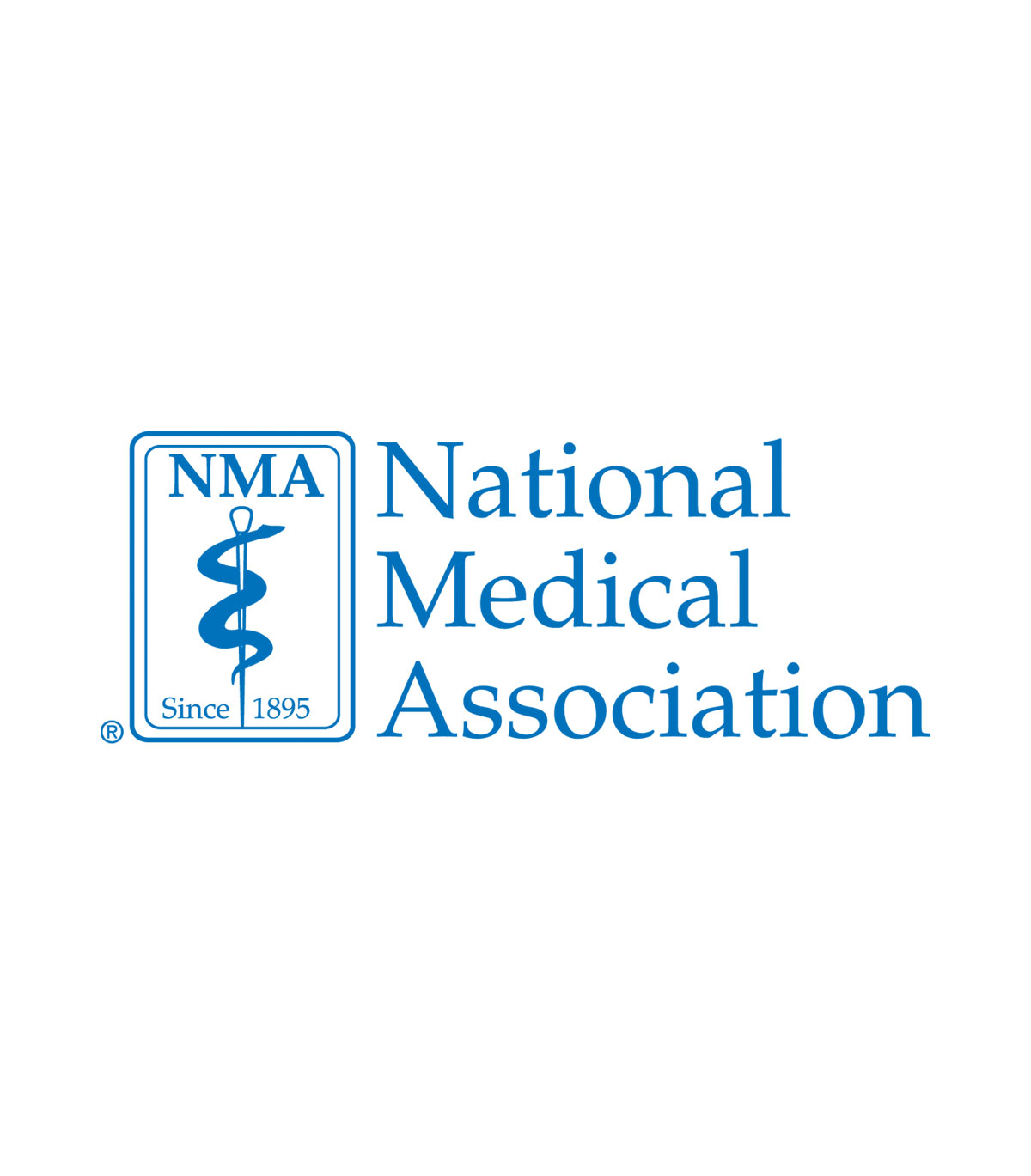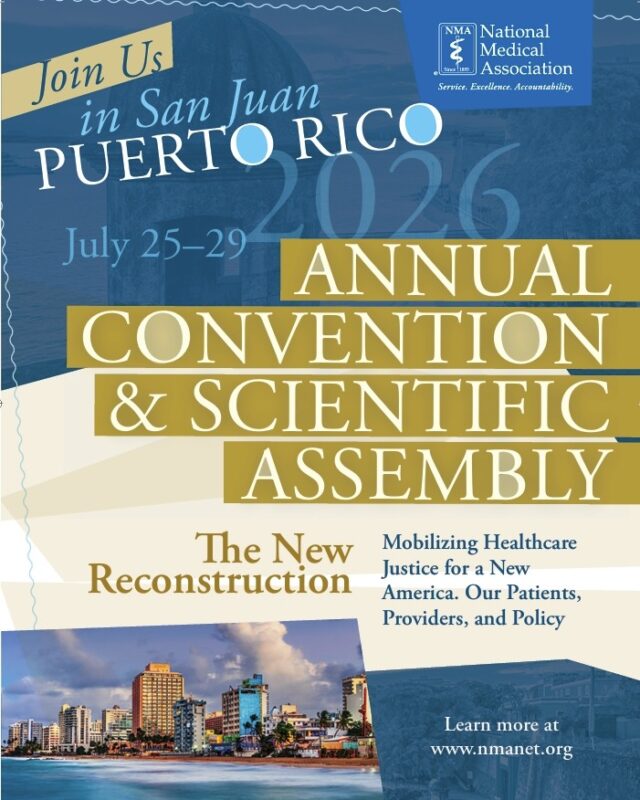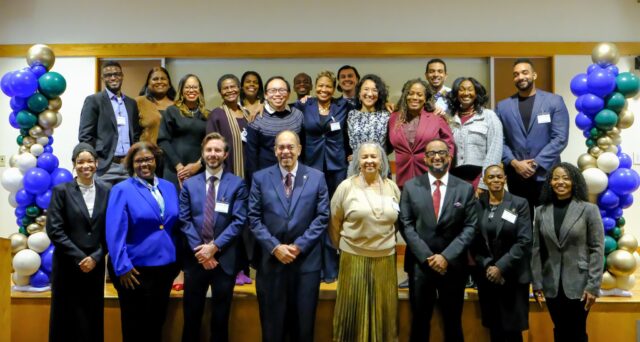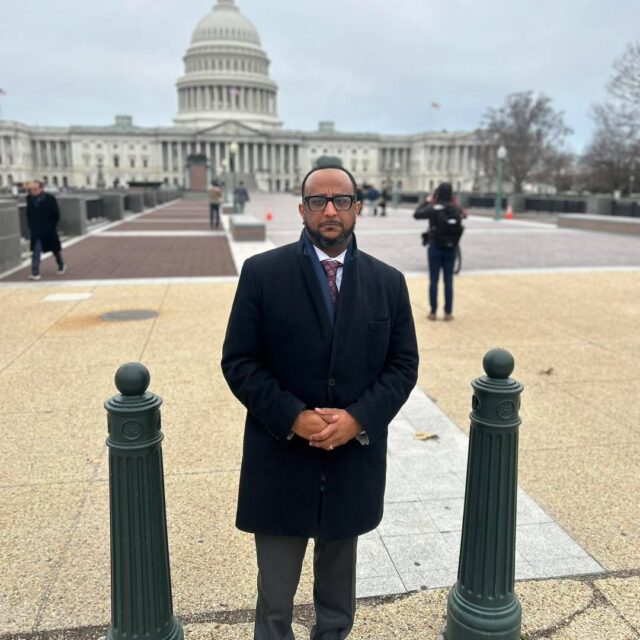History
The NMA was founded in 1895, during an era in US history when the majority of African Americans were disenfranchised. The segregated policy of “separate but equal” dictated virtually every aspect of society. Racially exclusive “Jim Crow” laws dominated employment, housing, transportation, recreation, education, and medicine. Black Americans were subjected to all of the injustices inherent in a dual medical care system.
Under the backdrop of racial exclusivity, membership in America’s professional organizations, including the American Medical Association (AMA), was restricted to whites only. The AMA determined medical policy for the country and played an influential role in broadening the expertise of physicians. When a group of black doctors sought membership into the AMA, they were repeatedly denied admission. Subsequently, the NMA was created for black doctors and health professionals who found it necessary to establish their own medical societies and hospitals.
“Conceived in no spirit of racial exclusiveness, fostering no ethnic antagonisms, but born out of the exigency of the American environment…” the NMA extended equal rights and privileges to all physicians. Although the NMA has led the fight for better medical care and opportunities for all Americans, its primary focus targets health issues related to minority populations and the medically underserved. The NMA remains committed to improving the health status and outcomes of African Americans and the disadvantaged.
Pioneers, Progress, and Perseverance
Story of Progress: The NMA Journey
Discover the history of the NMA as we explore the founding vision, the trials and triumphs of the early years, and the enduring legacy of the National Medical Association
The Founders
In 1895, the charter members who were present during the Cotton States and International Exposition at the first meeting, chose officers. Robert F. Boyd, M.D., of Nashville, TN, served as its first president. The other officers were: Daniel Hale Williams, M.D., from Chicago, vice president; Daniel L. Martin, M.D., of Nashville, TN, secretary; David H. C. Scott, M.D., Montgomery, AL, treasurer; and H. R. Butler, M.D., Atlanta, GA, chairman of the executive committee. Miles V. Lynk, M.D., of Memphis, TN, and Robert F. Boyd, M.D. were the prime moving spirits of the formation of the organization. The two men had invited all professional persons who could be located at the exposition to meet at the First Congregational Church, and the NMA was born.
The Early Years
The discriminatory policies of the nation at the time the NMA was founded manifested countless examples of the inadequacies of a segregated health care system. A priority item on the first NMA agenda was how to eliminate disparities in health and attain professional medical care for all people.
Racism in medicine created and perpetuated poor health outcomes for black and other minority populations. In the South, hospital accommodations were frequently substandard. If blacks were admitted to general hospitals at all, they were relegated to all-black wards. In some instances, white nurses were prohibited from caring for black patients. Conditions in the North were also inequitable. It is reported that as late as 1912, only 19 of New York City’s 29 hospitals would admit black patients, and only three gave black physicians the right to tend to their patients or perform operations.
With an increasing black population throughout the United States at the turn of the century, other concerns were added to the NMA agenda: (1) how to address the health care needs of a population that by 1912 exceeded 10 million; (2) how to increase the number of minority physicians needed to adequately treat them; and (3) how to improve the overall health of the black population. NMA members set up their own hospitals, emphasized physician training, and appointed special commissions to study major diseases contracted by minorities, such as tuberculosis, hookworm and pellagra.
The first issue of the Journal of the National Medical Association was published in 1909 and edited by Dr. Charles V. Roman. Scholarly research and findings regarding the prevention, treatment, management and care of illness and disease were reported quarterly. Today, monthly reports to medical institutions, physicians, medical students, and residents, have helped raise professional standards.
The Later Years
During the years that followed World War II, the NMA continued to lead the fight against discrimination in health care, focusing on the nation’s hospitals and medical schools. In 1951, several white medical colleges in the South and in border states gradually began admitting black students, and within ten years enrollment nearly doubled. The number of black students enrolled in medical school increased from 15.8 percent in 1947- 48 to 31.0 percent in 1955-56. By the early 1960s, over half of all southern medical schools (14 out of 26) were admitting black students.
In 1957, the NMA joined the National Association for the Advancement of Colored People (NAACP), the National Urban League, and the Medico-Chirurgical Society of the District of Columbia (an NMA affiliate) to sponsor the first Imhotep National Conference on Hospital Integration. The conference’s annual meetings were instrumental in disseminating strategies to end segregation in health care.
By 1960, African Americans were preoccupied with the civil rights movement. Dr. W. Montague Cobb, then editor of the Journal of the NMA, wrote, “With the deadline for social justice long overdue, Negroes in the medical and allied professions threw themselves into the battle to close the citizenship gap in the health field.” Fueled by demonstrations occurring in other parts of the country, the NMA coordinated sit-ins, marches and picket lines to advocate civil rights. Active participation replaced passivity. The NMA lobbied to pass the Civil Rights Act of 1964 and supported Dr. Martin Luther King’s 1965 voter registration campaign in Selma, Alabama.
It appeared that NMA involvement was effective. During this period, several legislative and judicial milestones were reached. The 1965 Civil Rights Acts that eventually outlawed discrimination in government-funded health programs, represented the hope that African Americans would enjoy an improved health status. For the first time, African Americans gained access to health care through Medicare and Medicaid, and the professional staffs and patient populations at hospitals were desegregated. However, the progress made during the 1960s failed to eliminate entrenched race-based disparities.









